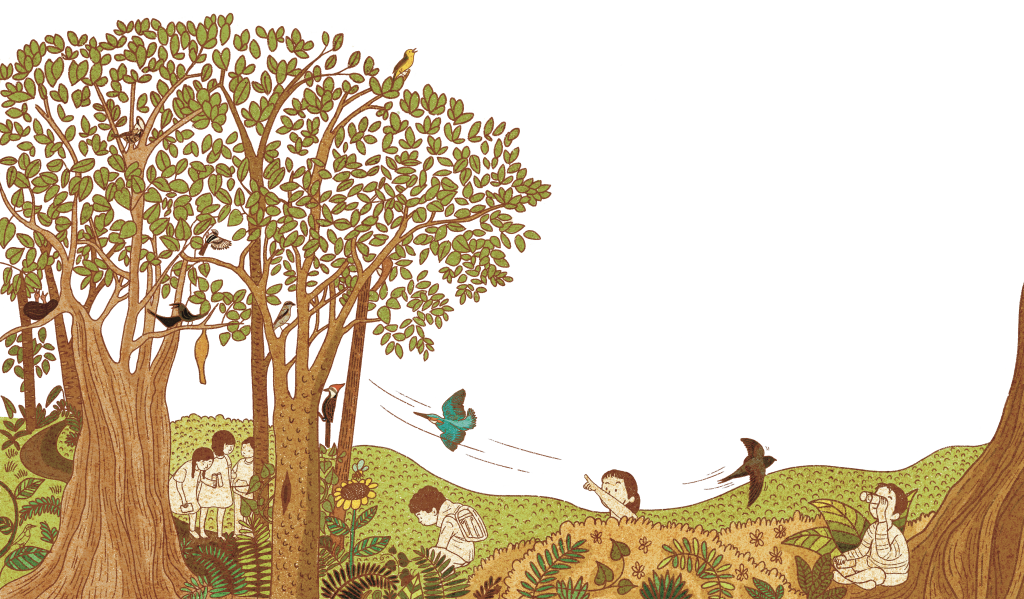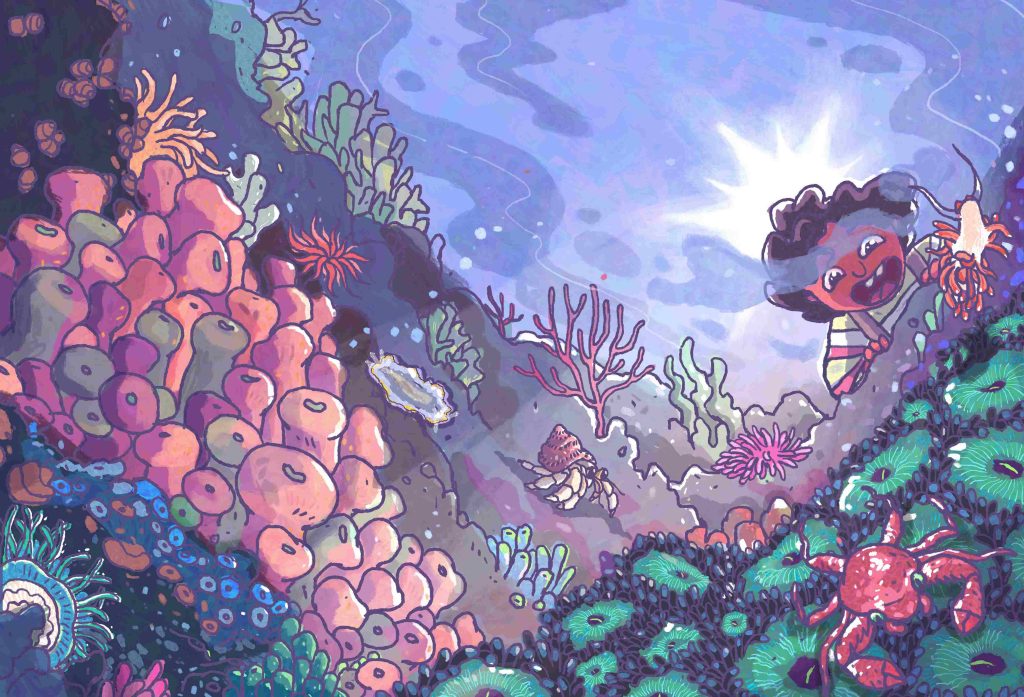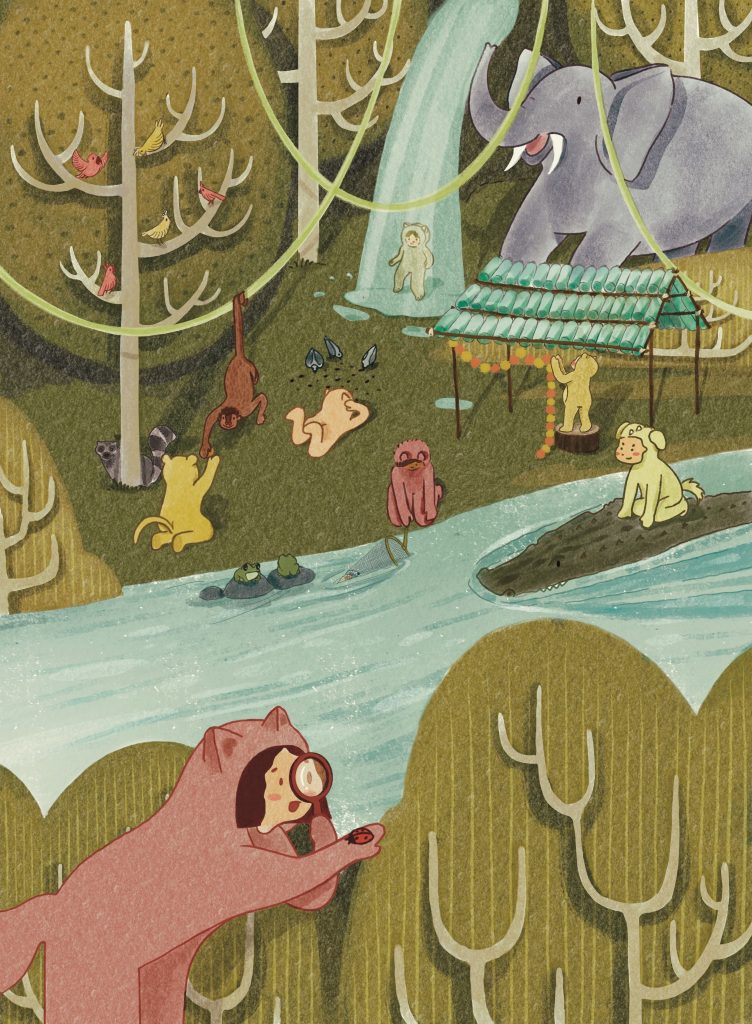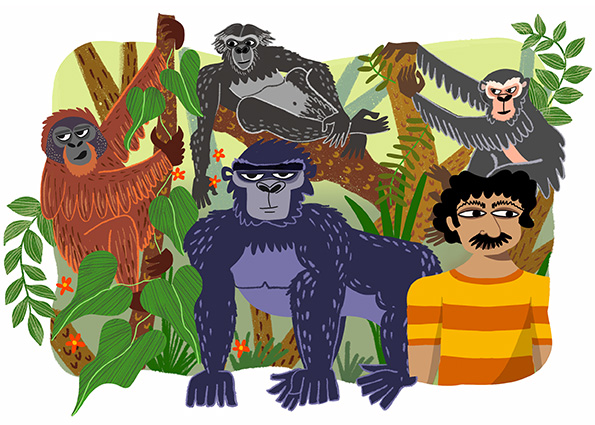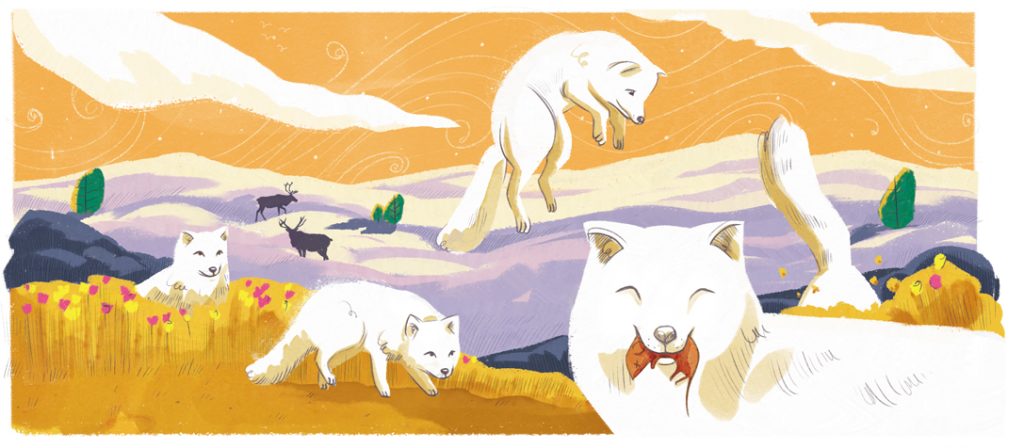My name is Ravi and I study butterflies in the lush green forests of the Western Ghats region of India. A person who studies butterflies is known as a lepidopterist. I want to tell you a story about something I witnessed almost 10 years ago, when I was working in the Biligiri Rangan Betta Tiger Reserve, Karnataka.
During the dry season water becomes scarce in the reserve, and the wildlife depends on the fast shrinking water-holes for something to drink. This means that elephants, gaur, deer and other big mammals often gather in these places, and can be spotted quite easily.
I also used these waterholes to rest until I was picked up by my jeep, as they had a thick canopy and nice shade to rest under. One particular day, my field assistant Kete Gowda and I were returning home from the forest in the scorching May heat. The trees were all leafless and the waterbodies fast drying up. There was a strong smell of elephant and gaur, and we knew to be careful, as these animals can attack humans if they get too close. As we were sitting near a big pond, waiting for our ride, I noticed butterflies gathering beside the water. This activity where butterflies come to damp patches to drink water and absorb salts from the mud is called ‘mudpuddling’. As we watched we were amazed to see hundreds and thousands of these beautiful and delicate butterflies: red, blue, green, orange, black, white and all the colours one can imagine, coming together on the damp banks.
I returned to my field camp, my head full of questions. In particular, why don’t all these butterflies get eaten by predators? They seemed so exposed! Next day we went back to the water-hole to watch the butterflies again. That was the first of many such visits, watching, taking notes and pondering on what we were seeing. Eventually, something extraordinary became clear: the butterflies were not positioning themselves randomly along the water’s edge. Instead, we found that butterflies of a similar colour and size grouped together. That means for example that all butterflies that are yellow or all butterflies that are red, orange, crimson, etc. will come together, even if they belong to completely different species.
The reason for this, we think, is that grouping together in this way gives the butterflies protection from predators. By gathering with others of a similar size or colour, it makes it harder for predators to pick out a single individual and target them. Such behaviours have been observed in birds before, but this is the first time it has been seen in butterflies.
This was just one of my butterfly-adventures before starting out on 5 years of study for a degree in Ecology at the Indian Institute of Science.
Fun facts about butterflies
The butterflies go through three stages of development before they become adults. The first stage is the egg, the second is the caterpillar stage, where the caterpillar feeds on plants and grows, before it goes into the third stage, the pupal stage. During this stage the pupa cannot move and is attached to a twig or a leaf, protected in a hard chrysalis. Finally, the last stage is the adult stage, when the bright and beautiful adult butterfly emerges from the chrysalis and flies away.
Many butterfly species have a single type of plant on which they lay their eggs. So if a caterpillar that feeds on mango leaf is given a leaf of banana plant, it won’t feed on it.
Only male butterflies mudpuddle, and the salts which they absorb while mudpuddling are transferred to females while mating. This helps the females produce more eggs.
Butterflies form the base of the food chain and are also one of the most important pollinators for plants. The caterpillars are herbivores, meaning the feed only on plants, whereas the adults are nectarivores, meaning that their diet consists almost completely of the sugar-rich nectar produced by flowering plants.
